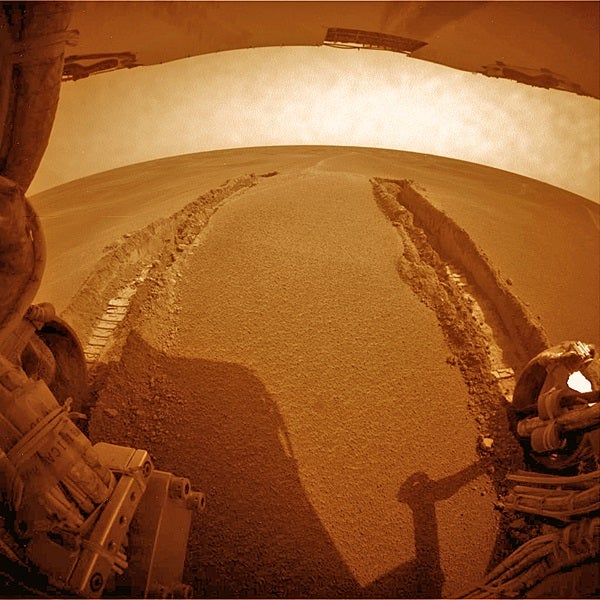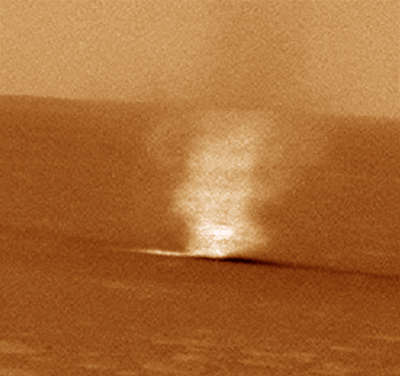On June 4, Mars rover Opportunity ended its month-long slog through a patch of soft dust that since April 26 had slowed its progress to inches per week.
“We’ve had a feeling over the past several days that this was coming,” writes Steve Squyres, principal investigator for the Mars rovers’ science instruments, in his mission update for Cornell University. The rover’s slippage lessened slightly in the last few drives and part of the craft’s suspension began moving as if its wheels were cresting the dune. “So all the signs were suggesting that the big breakout was almost upon us,” Squyres says. “Still, it’s hard to describe how good it felt to … see all six wheels back on solid ground again.”
“After a nerve-wracking month of hard work, the rover team is both elated and relieved to finally see our wheels sitting on top of the sand instead of half buried in it,” says Jeffrey Biesiadecki, a rover mobility engineer at the Jet Propulsion Laboratory (JPL) in Pasadena, California.
The next step for Opportunity is to investigate the terrain it got stuck in. “Much of the worst terrain was under the belly of the rover through all of this, down where we couldn’t see it,” Squyres explains. “From our new position, everything that was under us for all those weeks is now visible.”
While in the “sand trap,” Opportunity spun its wheels enough to have traveled 629 feet (192 meters) — but with the area’s poor traction, the rover moved forward only 3 feet (0.9 meter).
“After we analyze this area, we’ll be able to plan safer driving in the terrain ahead,” says Jim Erickson, JPL project manager for the Mars rovers.
Meanwhile, on the opposite side of Mars, Spirit’s perch on the slopes of the Columbia Hills in Gusev Crater afforded it another detailed look at dust devils. Just before noon local Mars time on May 15 (sol 486), Spirit captured 21 images of a whirlwind swirling toward the northeast about half a mile from the rover’s position. The dust devil covered a distance of about 1 mile (1.6 kilometers) at a speed of roughly 11 mph (17 km/h).
Controllers were planning to continue Spirit’s drive in the hills when its Mini-TES instrument, an infrared spectrometer, turned up some unexpected compositional differences in a rock called Backstay. “It’s a loose rock, not bedrock, so it may be a piece of impact ejecta from someplace far away,” Squyres speculates. Spirit will closely examine Backstay before continuing its journey.











